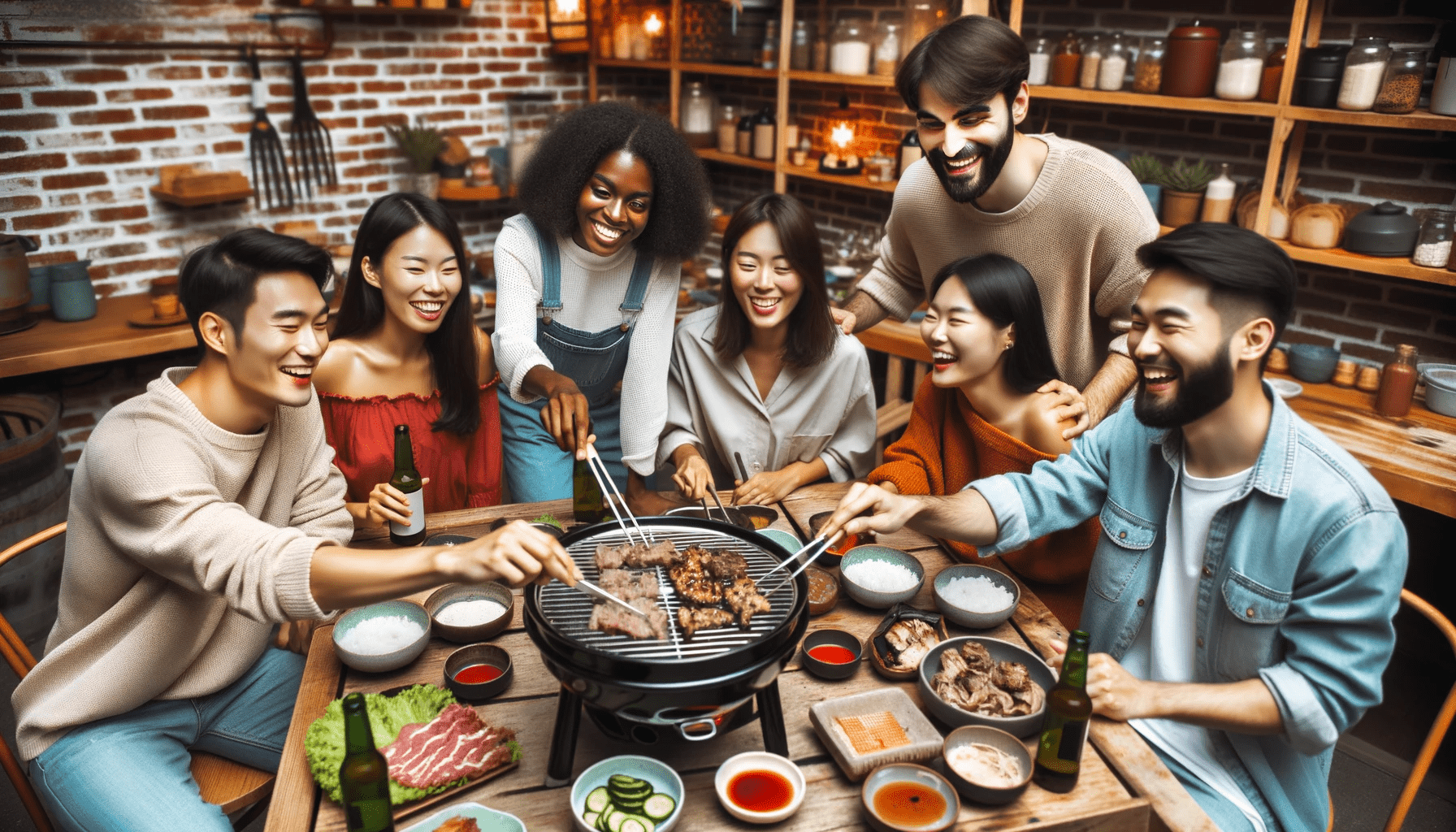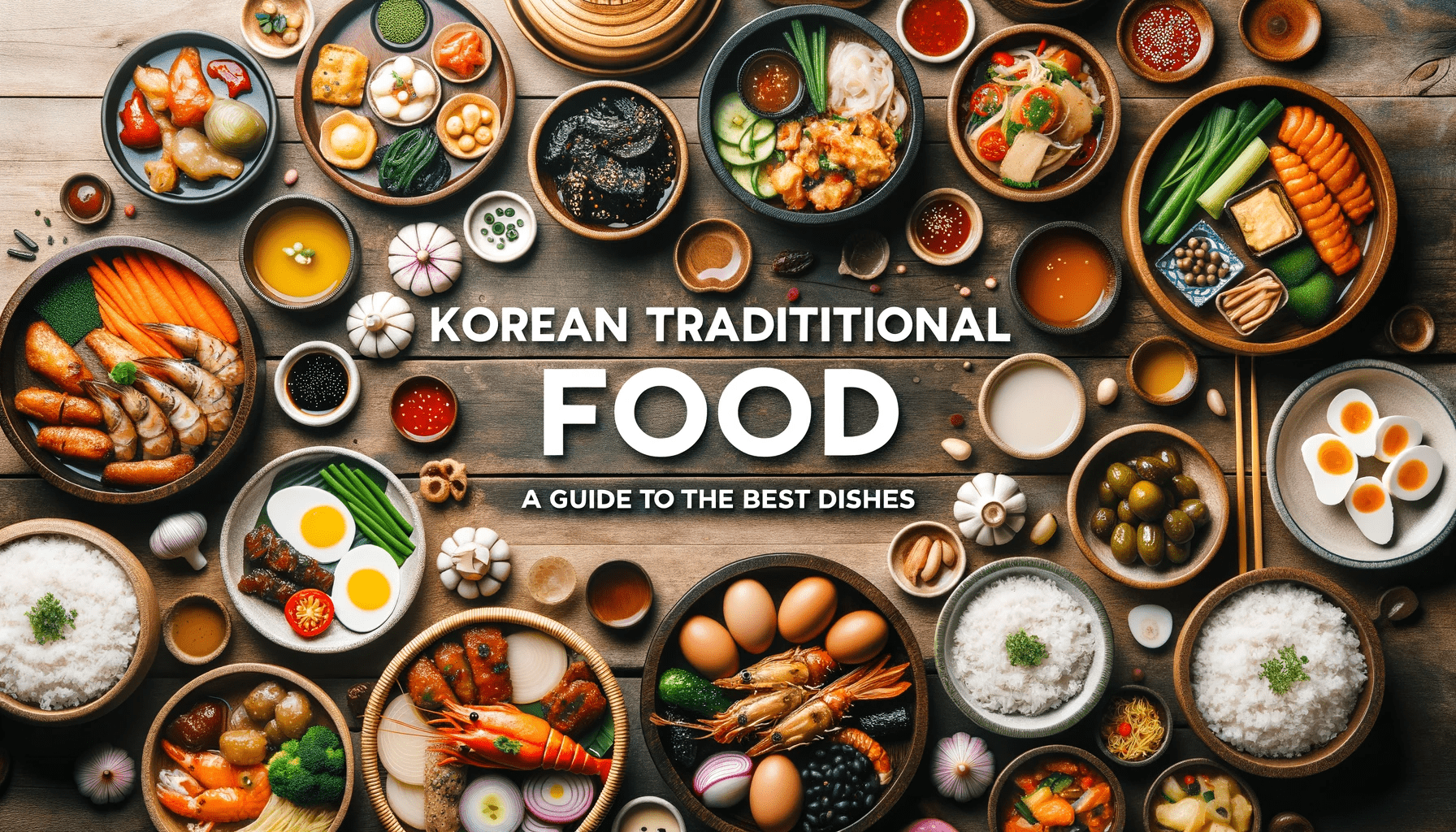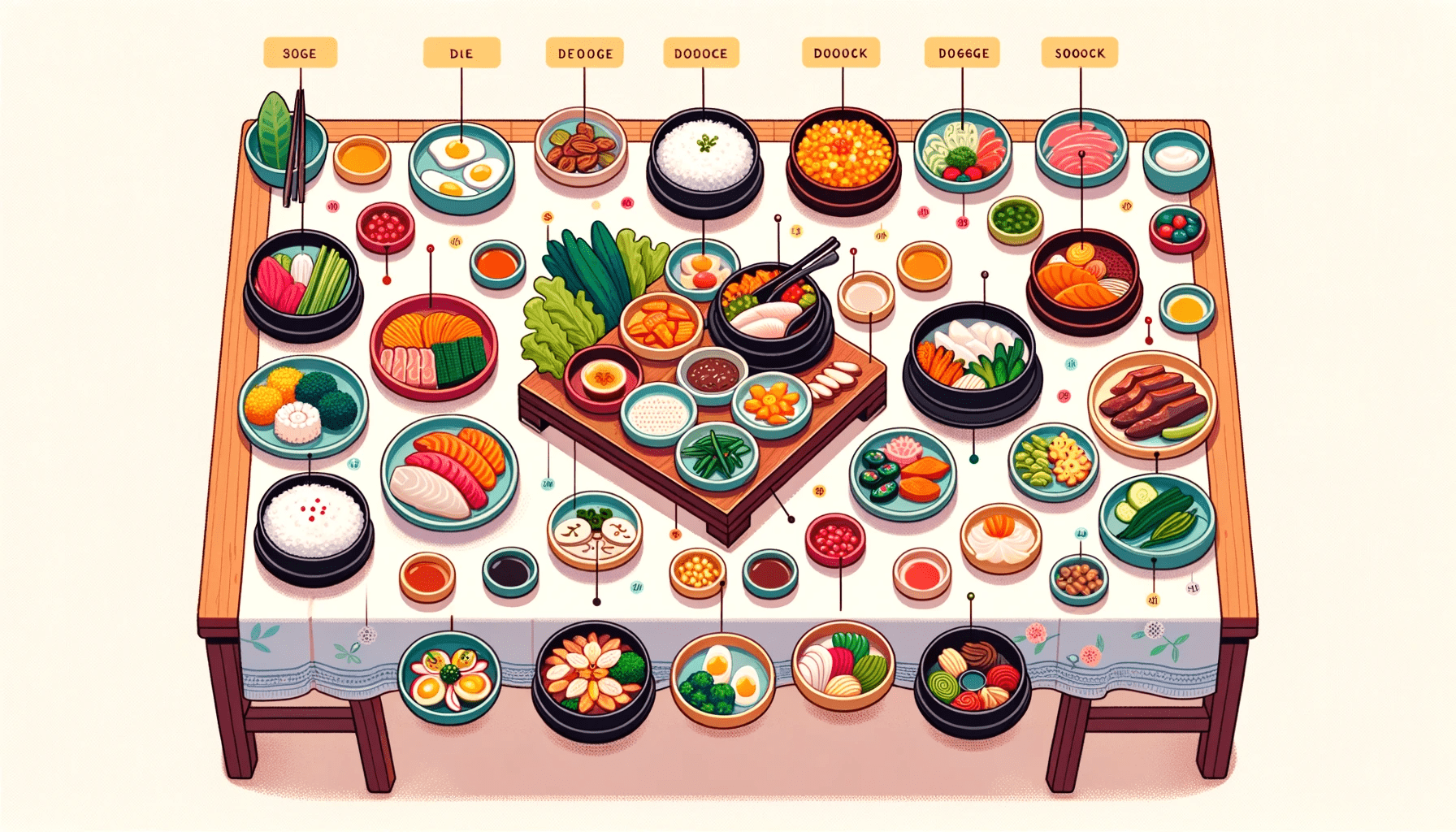Introduction
Welcome to The Ultimate Guide to Korean Barbecue: A Carnivore’s Delight. In recent years, Korean barbecue has gained immense popularity worldwide, captivating the taste buds of food enthusiasts and meat lovers alike. This culinary tradition, deeply rooted in Korean culture, offers a unique and interactive dining experience that has left its mark on the global gastronomic scene.
Brief History of Korean Barbecue
Korean barbecue, known as “gogi-gui” in Korean, has a rich history that dates back centuries. Its origins can be traced to the Goguryeo era (37 BC – 668 AD), where meat was primarily grilled for kings and nobles during banquets and royal feasts.
However, it wasn’t until the Joseon dynasty (1392–1897) that grilling meat became a popular cooking method among commoners. During this period, open-air markets began to emerge across Korea, offering an abundance of fresh ingredients including various cuts of meat.
Grilling these meats over an open flame became a favored way of cooking due to its simplicity and ability to preserve the natural flavors. Over time, techniques for marinating meats with unique blends of soy sauce, garlic, sesame oil, and other spices were developed to enhance the overall taste.
Explanation of Popularity and Global Influence
The popularity of Korean barbecue is not confined solely to South Korea but has spread across the globe with great fervor. Its rise can be attributed to multiple factors.
Firstly, Korean cuisine as a whole has gained international recognition for its bold flavors and diverse range of dishes. With its emphasis on communal dining and interactive grilling experience, Korean barbecue perfectly encapsulates this culinary appeal.
A key element driving the global influence is undoubtedly the explosion of K-pop (Korean pop music) and Korean dramas, which have amassed a devoted fan base worldwide. As fans immerse themselves in the culture portrayed in these entertainment forms, their curiosity extends to trying the food enjoyed by their favorite idols and actors.
This has led to an increased interest in Korean barbecue as a must-try culinary experience. Furthermore, the rise of globalization and multiculturalism has made Korean cuisine more accessible than ever.
Korean barbecue restaurants have sprung up in various cities around the world, enticing locals and tourists alike with the sizzle of grills and tantalizing aromas. The unique combination of flavors offered by Korean barbecue has captivated taste buds globally, contributing to its steady rise as a beloved food trend.
Understanding Korean Barbecue
In order to fully appreciate the culinary wonders of Korean barbecue, it is essential to understand its definition and underlying concept. Korean barbecue, known as “gogi-gui” in Korean, refers to the grilling or roasting of various types of meats at the dining table.
It is an interactive and social dining experience that brings people together to cook their own meat selections. The beauty of Korean barbecue lies in the fact that it combines the art of grilling with the flavorsome marinades and sauces used to season the meats.
The preparation process involves marinating thin slices or bite-sized pieces of meat in a mixture comprising soy sauce, garlic, ginger, sesame oil, honey, and other aromatic ingredients. This infusion of flavors creates a delightful harmony when combined with smoky charcoal or wood-fired grilling.
Bulgogi: The Beefy Indulgence
Bulgogi is undoubtedly one of the most popular choices for meat lovers when it comes to Korean barbecue. This succulent dish features thinly sliced beef marinated in a blend of soy sauce, pear juice, brown sugar, garlic, and sesame oil for several hours. The marinade not only tenderizes the meat but also imparts a rich umami flavor that enhances every bite.
Traditionally cooked on a grill over glowing charcoal or an open flame, bulgogi develops a caramelized crust while retaining its juicy tenderness within. As each slice sizzles on the grill and releases its tantalizing aroma into the air, anticipation builds among diners who eagerly await this mouthwatering delicacy.
Samgyeopsal: Pork Perfection
No discussion about Korean barbecue would be complete without mentioning samgyeopsal – thick slices of pork belly that offer an irresistible combination of crispness and succulence. The name “samgyeopsal” translates to “three-layered flesh,” referring to the distinct layers of fat and meat that make this cut so delectable. Often grilled over an open flame, samgyeopsal is all about achieving the perfect balance between crispy edges and tender meat.
It is a versatile option, allowing diners to experiment with different flavors by wrapping each slice in lettuce leaves along with garlic, chili paste (gochujang), and various pickled vegetables. This interactive element adds to the joyous communal experience of Korean barbecue.
Dak Galbi: Chicken Charisma
While beef and pork tend to steal the spotlight in Korean barbecue, chicken enthusiasts have a delightful option known as dak galbi. This unique dish features marinated chicken pieces cooked alongside an assortment of vegetables such as cabbage, onions, carrots, and sweet potatoes.
The marinade for dak galbi typically includes soy sauce, gochujang (Korean chili paste), garlic, ginger, rice wine or mirin, honey or sugar, and sesame oil. The resulting flavors are complex yet harmonious – spicy yet subtly sweet.
Seafood Options: From the Depths of Flavor
Korean barbecue is not limited to land-dwelling meats alone; seafood lovers can also indulge in an array of maritime delights. Popular seafood options for grilling include squid (ohjingeo), shrimp (saeu), scallops (gaejang), clams (kkotge), and fish fillets. These fruits of the sea are often marinated in a similar fashion as their meat counterparts or simply seasoned with salt before hitting the grill.
The smoky heat from grilling enhances the natural sweetness of seafood while imparting a hint of char that adds depth and complexity to each bite. Whether you prefer the tender texture of grilled squid or the succulent juiciness of shrimp, Korean barbecue offers a tantalizing array of seafood options for all discerning palates.
The Art of Grilling
Grilling in Korean barbecue holds a special place, not only because of its delicious results but also because of the traditional cooking methods that have been passed down through generations. The most authentic and revered way to grill meat in Korean barbecue is by using charcoal or wood fire.
This method infuses a distinct smoky flavor into the meats, elevating the overall taste and creating an unforgettable dining experience. The significance of using charcoal or wood fire lies in the unique characteristics they bring to the grilling process.
Charcoal provides intense heat and allows for precise temperature control, resulting in perfectly grilled meat with a beautiful caramelized exterior. On the other hand, wood fire imparts a rich smokiness that enhances the natural flavors of the meat, adding depth and complexity to every bite.
Direct Grilling
Direct grilling is one of the fundamental techniques used in Korean barbecue. It involves placing meat directly over high heat, usually just inches away from glowing embers or hot coals.
This method is ideal for thinly sliced meats like bulgogi (marinated beef) as it ensures quick cooking while preserving tenderness and juiciness. To achieve optimal results with direct grilling, it is essential to maintain constant attention to prevent overcooking or burning.
Regularly flipping the meat helps to distribute heat evenly and achieve an even sear on both sides. The close proximity to the heat source ensures a beautiful charred exterior while allowing fats to render out without excessive charring.
Indirect Grilling
Indirect grilling is another technique commonly employed in Korean barbecue when cooking thicker cuts of meat or items that require longer cooking times. It involves placing the meat away from direct heat while maintaining a lower temperature for slower cooking.
This method allows the meat to cook gradually, ensuring a tender and succulent result. To achieve indirect grilling, a two-zone fire is created by arranging the charcoal or wood on one side of the grill while leaving the other side empty.
The meat is then placed on the cooler side, away from direct heat, with the lid closed to trap heat and smoke for maximum flavor infusion. This method is commonly used for pork belly (samgyeopsal) or marinated chicken (dak galbi), allowing them to cook slowly and render out fat while remaining juicy and flavorful.
Combination Grilling
Combination grilling combines elements of both direct and indirect grilling techniques. It involves searing the meat over high heat using direct grilling first to create a caramelized crust, followed by moving it to a cooler part of the grill to continue cooking indirectly.
This method provides a balance between achieving an enticing charred exterior and ensuring thorough cooking throughout thicker cuts of meat. Combination grilling is often employed when cooking large chunks of beef like ribeye or short ribs.
By starting with direct heat, you can achieve that desirable charred crust, sealing in juices and adding delectable caramelization. Moving the meat to indirect heat after searing allows it to slowly cook through without becoming overly charred or dried out.
Mastering the art of grilling in Korean barbecue not only involves understanding different techniques but also appreciating the significance of traditional methods using charcoal or wood fire. Direct grilling ensures quick cooking with an appealing sear, while indirect grilling guarantees tenderness through slower cooking at lower temperatures.
Combination grilling offers a balance between charring and even cooking for thicker cuts. The careful application of these techniques enhances flavors, textures, and overall enjoyment when indulging in Korean barbecue’s carnivorous delights.
Essential Equipment for a Korean Barbecue Feast
Grill Types: Tabletop, Built-in, Portable, Electric, Gas-powered, etc.
When it comes to enjoying the authentic experience of Korean barbecue, having the right grill is crucial. There are various types of grills available that cater to different preferences and settings.
The most common option is the tabletop grill, which allows you to cook your meat right at the dining table. These grills are usually fueled by charcoal or gas, providing an intense heat that enhances the flavors of the meat.
For those who prefer a permanent setup in their backyard or patio, built-in grills offer a more convenient and durable option. Portable grills are ideal for outdoor picnics or camping trips as they are lightweight and easy to transport.
Electric grills provide a hassle-free alternative that can be used indoors without any smoke or charcoal cleanup. There are gas-powered grills that offer quick heating and precise temperature control.
Tools and Utensils Needed for a Successful Barbecue Experience
To achieve mastery in Korean barbecue cooking, having the right tools and utensils is essential. Firstly, tongs and spatulas come in handy for flipping meat on the grill with precision while ensuring it cooks evenly on all sides.
These long-handled utensils allow you to handle hot food safely without compromising its presentation or quality. Additionally, grill brushes are indispensable for maintaining a clean cooking surface throughout your barbecue session.
They help remove any leftover food particles or grease from previous rounds of grilling while preventing excessive smoke during cooking. Another important tool is marinade brushes—perfect for applying flavorful sauces onto your grilled meats.
Whether you prefer traditional soy-based marinades or spicy gochujang-infused blends, using brushes will ensure an even distribution of flavor across every piece of meat. Don’t forget to include a pair of scissors in your arsenal of barbecue tools.
Korean barbecue enthusiasts often use scissors for cutting meat into bite-sized pieces directly on the grill. This practice not only allows for easy sharing and sampling but also enhances the overall dining experience by creating bite-sized morsels that are easier to handle and savor.
By investing in these quality tools, you can elevate your Korean barbecue skills and create a seamless, enjoyable grilling experience for yourself and your guests. Remember, in Korean barbecue, the quality of equipment used greatly influences the outcome of the meal.
Select a grill that suits your needs and preferences—whether it’s tabletop, built-in, portable, electric or gas-powered-and complement it with essential utensils like tongs, spatulas, grill brushes, marinade brushes, and scissors. By doing so, you’ll be well-equipped to embark on an extraordinary culinary journey filled with succulent grilled meats and mouth-watering flavors.
Side Dishes: The Perfect Companions to Korean Barbecue
An array of banchan (side dishes) commonly served with Korean barbecue:
Korean barbecue is not just about the grilled meat; it’s also about the delectable side dishes, known as banchan, that accompany the main course. These flavorful accompaniments not only enhance the overall dining experience but also provide a perfect balance to the rich and savory flavors of the barbecue. Here are some of the most popular banchan you can expect to find at a traditional Korean barbecue feast.
1. Kimchi varieties: cabbage kimchi, radish kimchi, cucumber kimchi
2. Namul (seasoned vegetables) such as spinach, bean sprouts,and fernbrake
3. Japchae (stir-fried glass noodles with vegetables)
Conclusion
As you embark on your Korean barbecue adventure, remember that the side dishes are as important as the grilled meat itself. The array of banchan that accompanies each plate adds depth, balance, and variety to every bite. From the fiery tanginess of kimchi to the refreshing crunch of namul and the flavorful delight of japchae, these side dishes elevate your dining experience to new heights.
So savor each morsel, embrace the communal spirit of shared food, and let the symphony of flavors transport you to a culinary paradise. Indulging in Korean barbecue is not just about nourishing your body but also nourishing your soul with good food, good company, and unforgettable memories.





0 Comments